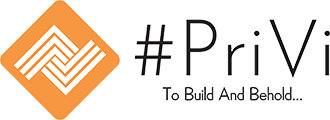Introduction
The Intersection of User Experience (UX) and SEO
User experience (UX) and search engine optimization (SEO) have become inextricably linked in the digital age. While traditionally treated as separate entities, they now intersect in ways that are vital to the success of any online presence. Understanding this intersection is key to unlocking the full potential of both disciplines.
Understanding the Modern Digital Landscape
The digital landscape is more complex than ever before. With the rise of mobile browsing, voice search, and AI-driven algorithms, user expectations have evolved dramatically. As a result, businesses must adapt by focusing not only on getting users to their sites but also on providing a seamless, enjoyable experience once they arrive.
You would like to read: SEO Tips to Avoid Google Penalty
The Evolution of SEO
From Keywords to User-Centric Strategies
SEO has evolved from the early days of keyword stuffing and link farming to a more sophisticated, user-centric approach. Search engines now prioritize user satisfaction, meaning that the tactics that once drove traffic are no longer sufficient. Modern SEO strategies must focus on delivering value to users, which is where UX comes into play.
The Role of Search Engines in Prioritizing UX
Search engines like Google have become increasingly adept at understanding user behavior. They measure factors such as time on site, bounce rate, and mobile-friendliness to determine how well a website meets user needs. As a result, UX has become a critical factor in search engine rankings, making it essential for businesses to optimize their sites accordingly.
Understanding User Experience (UX)
Defining User Experience
User experience encompasses every interaction a user has with a website, from the moment they land on a page to the time they leave. It includes aspects such as navigation, design, content, and overall usability. A positive UX ensures that users can easily find what they’re looking for, enjoy the process, and feel compelled to return.
Key Elements of UX: Usability, Accessibility, and Aesthetics
Three key elements define a successful UX: usability, accessibility, and aesthetics. Usability refers to how easily users can navigate and interact with a site. Accessibility ensures that all users, including those with disabilities, can access and use the site effectively. Aesthetics, while more subjective, play a crucial role in making a site visually appealing and engaging.
You would like to read: Dominate Local SEO: Rank for ‘Near Me’ Searches
How UX Influences SEO
User Engagement and Dwell Time
User engagement, particularly dwell time (the amount of time a user spends on a page before returning to the search results), is a significant indicator of UX. Search engines interpret longer dwell times as a sign that users find the content valuable, which can positively impact rankings.
Bounce Rate: The Silent SEO Killer
Bounce rate, the percentage of visitors who leave a site after viewing only one page, is a critical UX metric. A high bounce rate often indicates poor UX, such as slow load times or irrelevant content, which can harm SEO performance. Reducing bounce rates by improving UX is essential for maintaining strong search rankings.
Mobile Optimization and Its Impact on Rankings
With more users accessing the web via mobile devices, mobile optimization has become a cornerstone of both UX and SEO. Search engines now penalize sites that aren’t mobile-friendly, making it imperative for businesses to ensure their websites are fully optimized for mobile use.
The Role of Content in UX
Creating High-Quality, Relevant Content
Content is the backbone of UX. High-quality, relevant content not only satisfies user queries but also keeps them engaged. Search engines reward websites that provide valuable content by ranking them higher, further emphasizing the importance of content in UX.
The Importance of Readability and Structure
Content readability and structure are crucial for UX. Well-organized content with clear headings, bullet points, and concise paragraphs enhances the user’s ability to find and absorb information. This, in turn, improves user satisfaction and can boost SEO rankings.
Technical Aspects of UX
Page Load Speed and Its Effect on User Retention
Page load speed is a critical component of UX. Users expect pages to load quickly, and any delay can lead to frustration and increased bounce rates. Search engines consider load speed in their ranking algorithms, so optimizing for speed is essential for both UX and SEO.
The Importance of Secure, Accessible Websites
Security and accessibility are fundamental to UX. Users need to trust that their data is secure, and search engines prioritize sites that are HTTPS-secured. Additionally, ensuring that a website is accessible to all users, regardless of their abilities, is not only a legal requirement but also a best practice for improving UX and SEO.
Case Studies: UX and SEO Success Stories
Example 1: How a Retail Giant Improved UX to Boost SEO
A major retail company revamped its website to enhance UX by simplifying navigation, speeding up load times, and optimizing mobile usability. As a result, the company saw a significant increase in user engagement, lower bounce rates, and improved search engine rankings.
Example 2: The Impact of UX Enhancements on a Small Business Website
A small business implemented UX improvements, including better content organization, faster page loading, and mobile optimization. These changes led to a noticeable increase in search traffic, higher conversion rates, and better overall user satisfaction, demonstrating the powerful impact of UX on SEO.
Common UX Mistakes That Hurt SEO
Overloading Pages with Ads and Pop-ups
While monetization is essential, overloading pages with ads and intrusive pop-ups can detract from the user experience. These distractions often lead to higher bounce rates and lower dwell times, negatively affecting SEO.
Ignoring Mobile Users: A Costly Oversight
Neglecting mobile optimization is a common mistake that can severely impact SEO. With the majority of users accessing websites via mobile devices, a non-responsive design can lead to poor user experiences and lower search rankings.
Conclusion
The Symbiotic Relationship Between UX and SEO
UX and SEO are two sides of the same coin. A website that prioritizes UX naturally aligns with the goals of SEO, leading to better search rankings and higher user satisfaction. By focusing on delivering an exceptional user experience, businesses can improve their SEO performance and achieve long-term success.
Future Trends: The Increasing Importance of UX in SEO Strategies
As search engines continue to evolve, the importance of UX in SEO strategies will only grow. Businesses that stay ahead of the curve by continually optimizing their websites for user experience will be best positioned to succeed in the competitive digital landscape.










